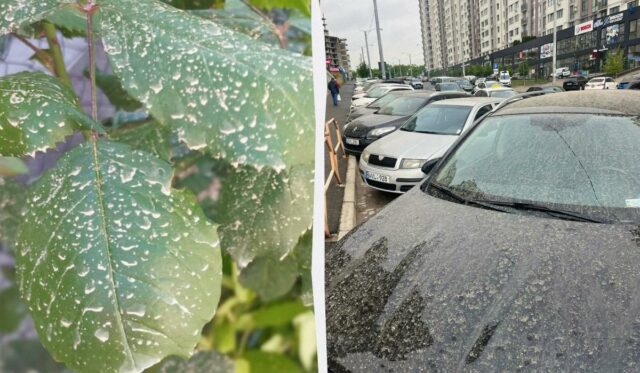In the Odessa region and other regions of Ukraine, sand-laden rain falls
In the Odessa region and in other regions of Ukraine, rain accompanied by sand fell. It could be seen on cars, roofs, and plants.
According to a UNIAN correspondent, social media users reported dark yellow rain in the village of Vylkove in the Odessa region, in Vinnytsia, Zhytomyr regions, Cherkasy, Moldova, and Romania.
In particular, residents of Chisinau (Moldova) published photos of sand after the rain on cars.
In the city of Izmail in the Odessa region, local residents also noticed dust around.
«It looks like sand, but more like clay… Meteorologists report dust and sand from the Sahara Desert,» wrote members of the local internet community, urging pet owners not to let their pets eat grass.
According to experts from the Ukrainian Meteorological Center, a cyclone in the Mediterranean Sea brought sand and dust from the Sahara to the Balkan Peninsula. Heavy rains washed most of it into Greece and Bulgaria. However, the cyclone reached Ukraine from Europe. That is why residents of the Odessa region could see «dirty» rain.
Experts Explain the Phenomenon
As reported by «Suspilne», leading meteorologist of the Hydrometeorological Center of the Black and Azov Seas Elena Tarnavska, the cyclone came from the region of Greece, from the south-east of Europe. Therefore, there is a sandy mass circulating in its system, and in Ukraine, precipitation came in the form of rain with sand.
She added that in the future, the cyclone will move northward. Therefore, such precipitation is not expected in the coming days.
Meteorology and climatology expert Inna Khomenko noted that this sand is safe for humans — it will not harm health. On the contrary, the atmosphere has been purified, and the concentration of dust in the air is not exceeded.
«There is no need to fear, this dust is safe for humans. With the rain, everything has washed away, the atmosphere has been cleared. Moreover, the precipitation was very intense. The dangerous particles are the ones currently observed over the territory of North Africa. Their concentration is very high. There, they really harm human health,» says Khomenko.






